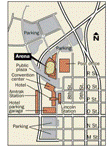Community and Regional Planning Program

Community and Regional Planning Program: Faculty Scholarly and Creative Activity
Document Type
Article
Date of this Version
5-2008
Abstract
Abstract: The U.S. Pacific coastal states are at risk from both locally and distantly generated tsunamis. This vulnerability can be reduced by effective hazard management plans, but no studies have been conducted to determine how local jurisdictions have incorporated tsunami hazard management into their planning frameworks. This paper analyzes the quality of hazard management plans from 43 coastal counties in these states. Plan quality was measured by a plan evaluation protocol defined by five components and 37 indicators. The results show that few Pacific coastal counties have prepared well for tsunamis. Most plans have a weak factual basis, unclear goals and objectives, weak policies, and few coordination and implementation mechanisms. The average plan quality score is 12.25 out of 50 points and 10 counties never mention tsunami risks in their local plans at all. This evaluation suggests that these jurisdictions need to build a solid factual basis about tsunami hazards, set appropriate goals and practical objectives, expand the array of tools used by planners, enhance interdisciplinary and interorganizational coordination mechanisms, and improve their mechanisms for plan implementation.


Comments
Published in Natural Hazards Review, Vol. 9, No. 2, May 1, 2008. DOI: 10.1061/(ASCE)1527-6988(2008)9:2(91) Copyright © ASCE. Used by permission.